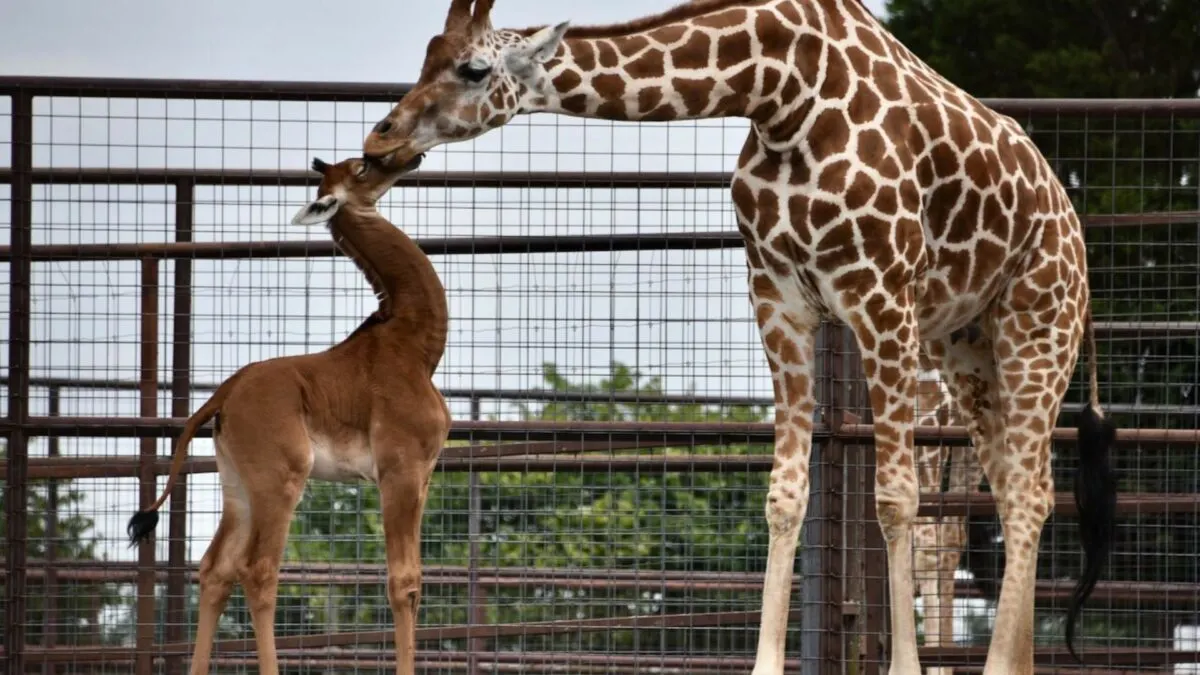Do you want to see giraffes in their natural habitat? Are you fascinated by their grace as they roam carelessly throughout the plains of Africa? Have you ever wondered what it must feel like to spot a giraffe herd somewhere in the wild?
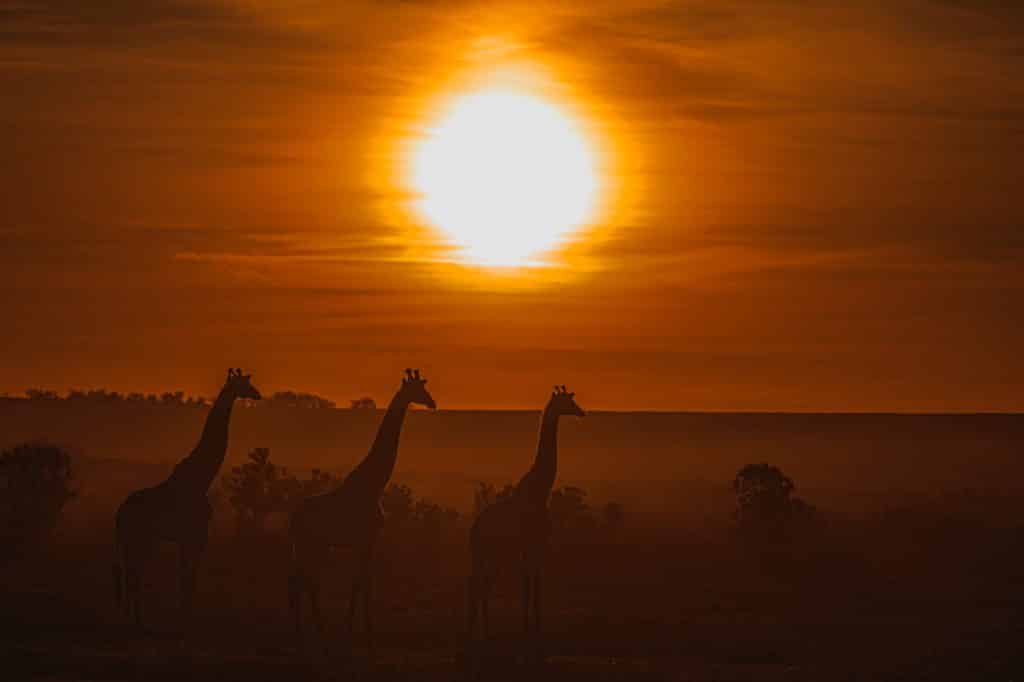
We have researched where the best places to see giraffes in the wild are. Helping you discover giraffes on a more personalized level.
In this article, you will learn all about giraffes and where to see them.
You can read the whole article from the beginning or jump straight to the most relevant chapter for you:
Key Points
| Key Points | |
|---|---|
| Get to know giraffes | – Giraffes are the tallest animals with unique features like long necks and legs. |
| – Giraffes are often viewed in zoos but seeing them in their natural habitat is captivating. | |
| Are giraffes endangered in Africa? | – The giraffe population has decreased by up to 40% in the last 30 years. |
| – Giraffes are classified as ‘vulnerable’ by the IUCN, with some subspecies at higher risk. | |
| Why are giraffes endangered? | – Main threats include habitat loss, disease, human factors like poaching, and climate change. |
| Where to find and see giraffes | – Giraffes are native to Africa, mainly in sub-Saharan regions. |
| – There are nine subspecies of giraffes scattered across the continent. | |
| Physical Traits of giraffes | – Giraffes are the tallest animals, with adult males reaching 4-6 meters and females 4-4.8 meters. |
| – They have the longest tail of any land mammals, which can grow up to 2.4 meters long. | |
| Best Places to See Giraffes in the Wild | – The article lists the top places to see giraffes in the wild with key statistics. |
Get to know giraffes
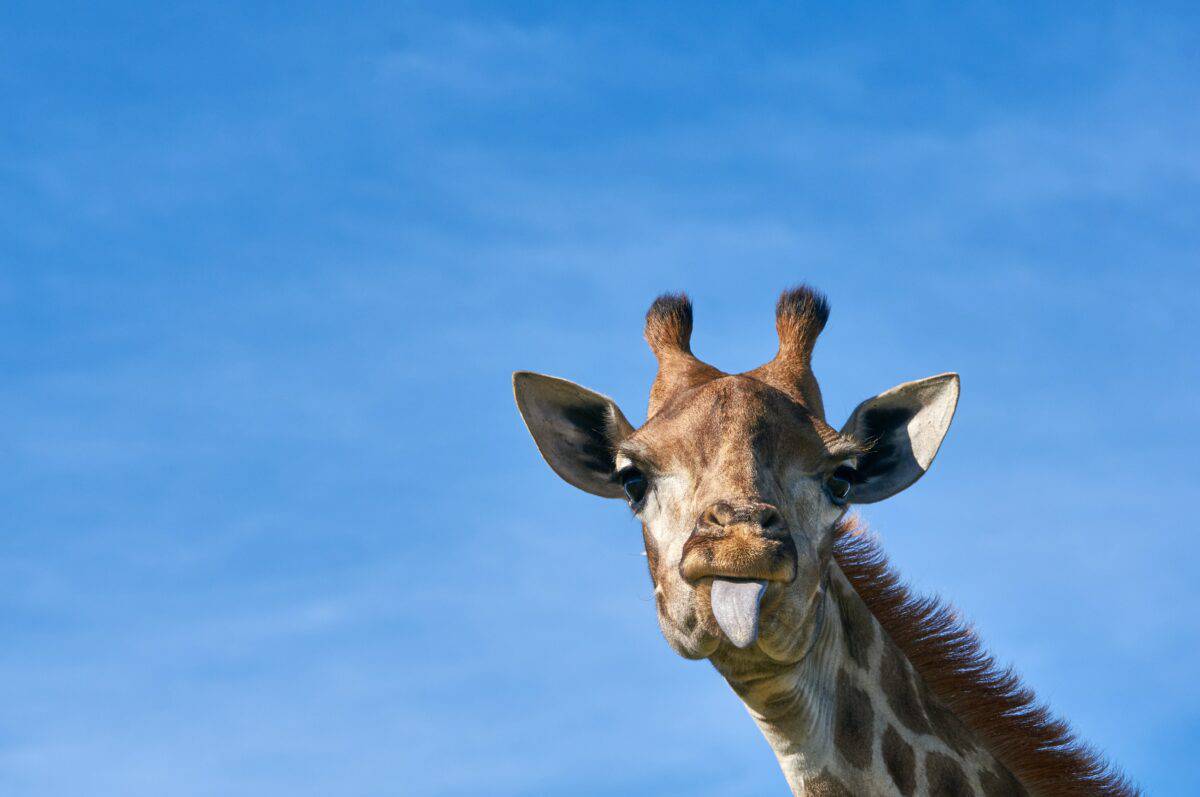
The tallest animal in the world, these must-see animals are graceful, majestic and intriguing to observe. Often viewed in zoos around the globe, being able to spot these animals in their natural habitat is a truly memorizing experience. Their height, as well as their extremely long neck and legs, ensure that giraffes are unique animals which adds to the excitement of seeing them meandering through the plains of Africa.
Are giraffes endagered in Africa?Endangerment of giraffes
According to the International Union for the Conservation of Nature, the giraffe population has decreased by up to 40% over the last 3 decades. Despite not being legally endangered, giraffes are certainly in trouble as the IUCN has found giraffes as being ‘vulnerable’ meaning they could face a risk of extinction.
Frightening figures including the fact that, according to the IUCN, in 1985, around 150,000 wild giraffes existed, but now there are fewer than 97,000.
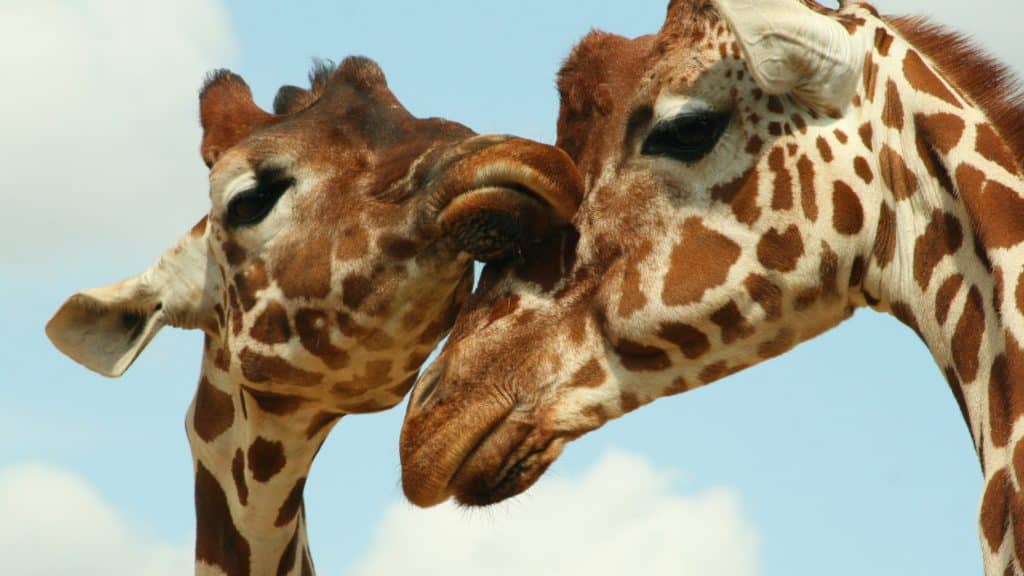
There are 9 subspecies of the giraffe, and for some of the subspecies, the risk of endangerment is higher. For example: for the Kordofan giraffe, around 90% of its population has been lost since the late 1980s and currently, there are only 2000 such giraffes left in the wild. Likewise, the Nubian giraffe population has declined by 98% and only lives on protected land in Kenya.
Why are giraffes endangered?
Here we have researched for you the main reasons why giraffes might go extinct and what you can do to help.
Habitat loss
Giraffes are mainly found grazing in savannahs around Africa, but in recent times, due to an increase in land being turned into farms and ranches for production for agriculture, their numbers have dwindled.
As well as their land changing to be used by other means, another main contributor to the giraffe’s loss of habitat is the charcoal industry. The need for charcoal means that many individuals in Africa are harvesting trees and then burning the wood. This can be hard for giraffes who rely on those trees as a source of nutrition.
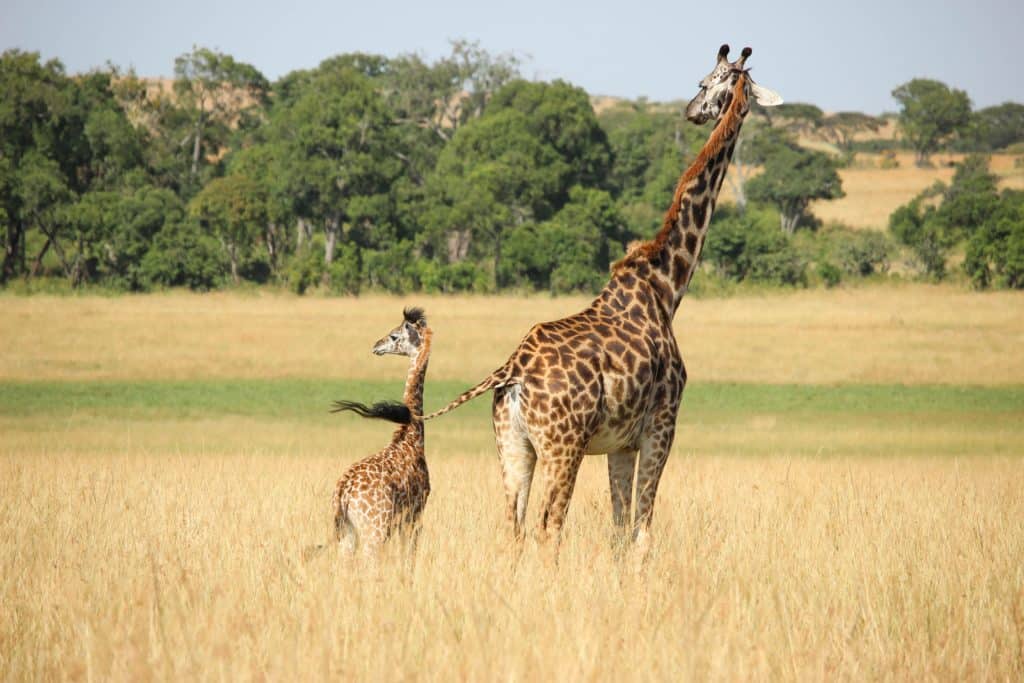
Disease
In recent times, giraffes have been threatened by disease. This mainly includes a lesion skin disease which is widespread across sub-Saharan Africa. Scientists are still unsure as to what are the main causes of skin disease, as to whether environmental factors or a mixture of various other diseases.
Having said that, certain studies have indicated that skin lesion disease amongst giraffes is more prevalent in areas where there is lower soil fertility. This could help us understand how best to help giraffes in these areas.
Other Human Factors
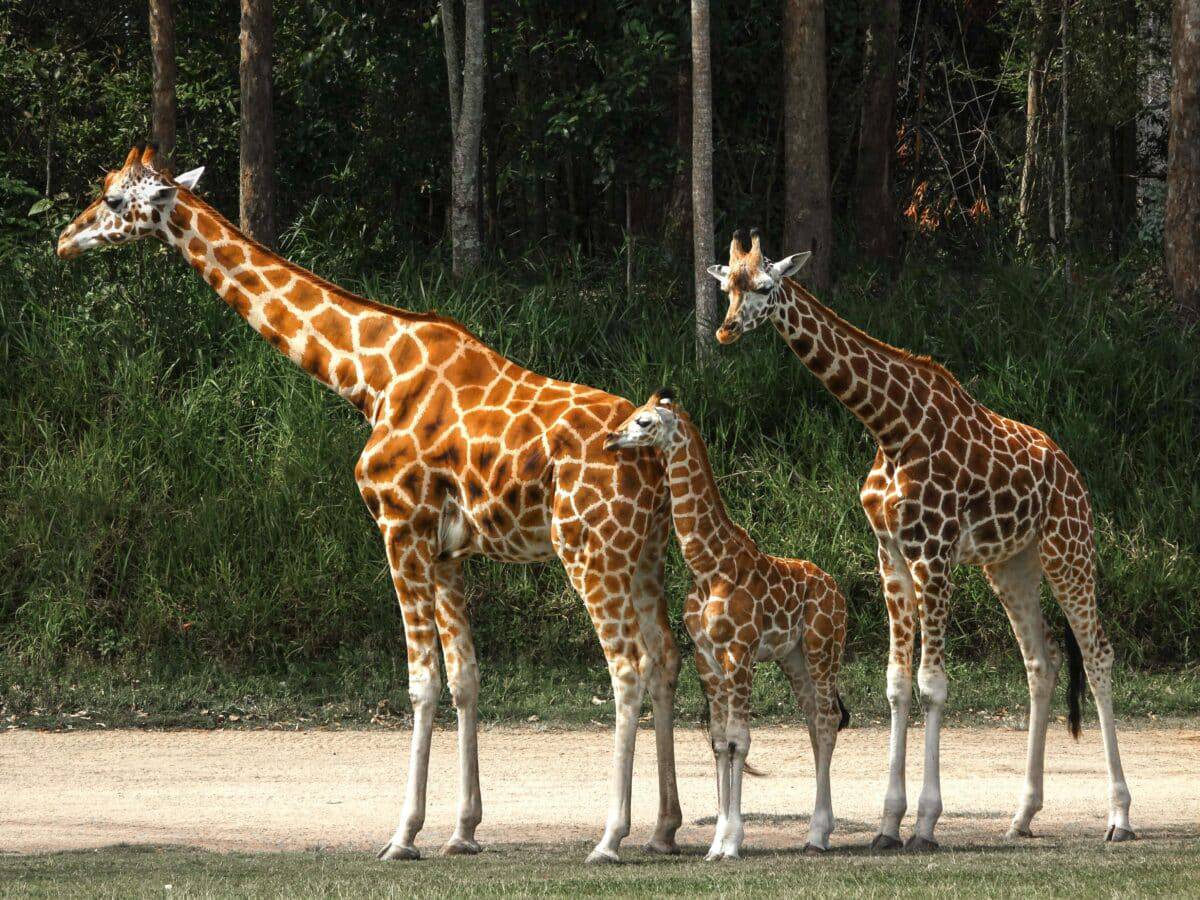
In certain parts of Africa, for example: in Sudan, the number of giraffes has decreased significantly over the last 30 years or so. This is primarily due to civil war, as well as other human factors including wildlife trafficking and poaching.
Humans have been hunting giraffes for many years. Across the African continent, humans seek giraffes for different means – including as food as well as skin to make clothes. In addition, along with elephants, giraffes are a popular source of food and money. This has led to an increased rate of killing of giraffes.
Other reasons why the number of giraffes is declining include prolonged droughts due to climate change. Raising awareness is important for us to understand the magnitude at which giraffes are being killed in Africa. With this knowledge, we can continue with conservation efforts to try to help this vulnerable creature.
Where to find and see giraffes
Let’s see which parts of the world giraffes inhabit.
Geographic distribution of giraffes
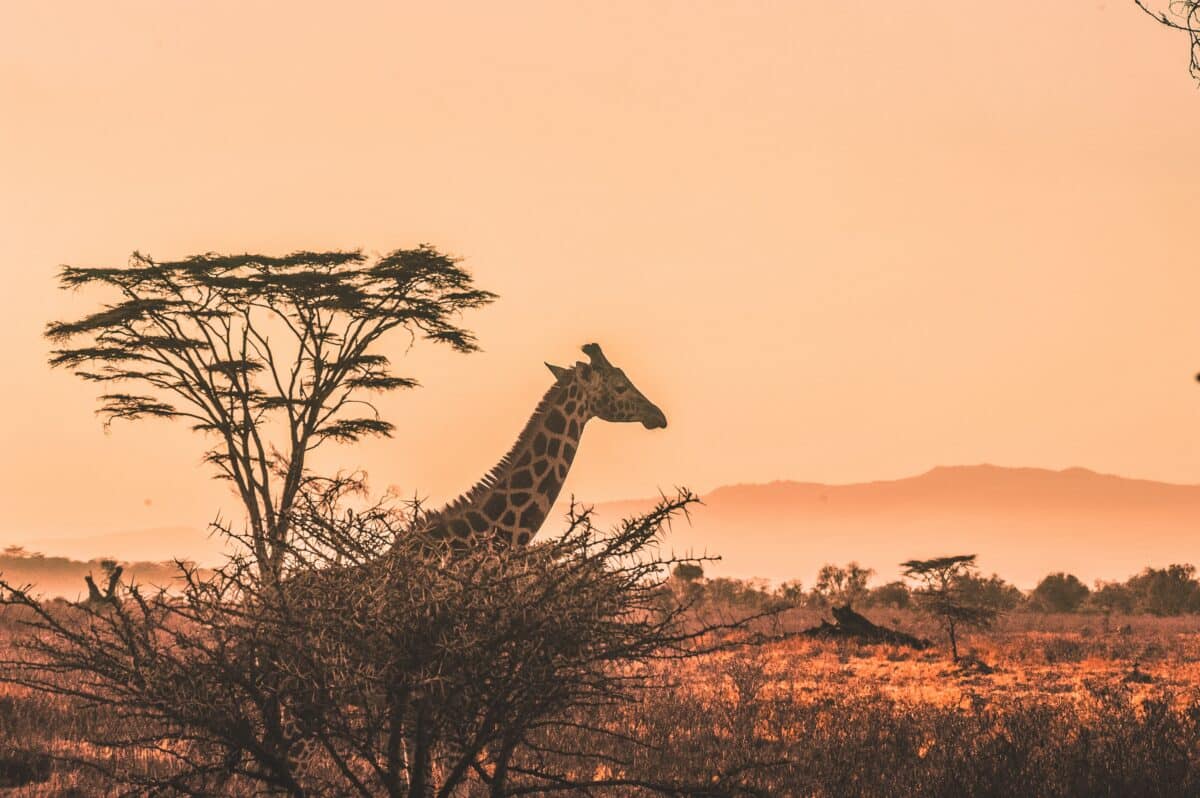
Giraffes are native to Africa. Giraffes are distributed across different parts of the continent, though you can mainly find them in the sub-Saharan regions. It goes without saying that giraffes live in hotter climates, but also, generally speaking, giraffes move around according to where they can find food.
There are nine subspecies of giraffes which are scattered across the African continent. The reticulated giraffe lives in parts of Ethiopia, Somalia as well as northeast Kenya. Such subspecies of giraffe grazes around forests and savannas in these regions.
Another example of a giraffe is the South African giraffe which lives in the Northern part of South Africa, Botswana, Zimbabwe as well as Mozambique. Another example is the Nigerian giraffe which you can mainly find in Niger, including the Niger River basin.
You will find that female giraffes roam around in groups of around 12 members. Male giraffes will live in bachelor herds including older males. Having said that, individual giraffes will sometimes leave and join herds at any moment.
Giraffe diet varies depending on the time of year. Throughout the dry season, giraffes eat evergreen leaves. During the rainy season, giraffes eat new leaves from deciduous trees. In the wild, on a daily basis, giraffes can eat up to 66kg of food each day.
Physical Traits of giraffes
The giraffe is the tallest animal in the world. What makes it such an easily distinguishable animal in the wild is its long neck and long legs. Adult male giraffes can stand at 4-6 meters tall while female adult giraffes stand at 4- 4.8 meters tall.
As well as their height, giraffes have the longest tail of land mammals. Generally speaking, their tail can grow up to 2.4 meters long.
Best Places to See Giraffes in the Wild
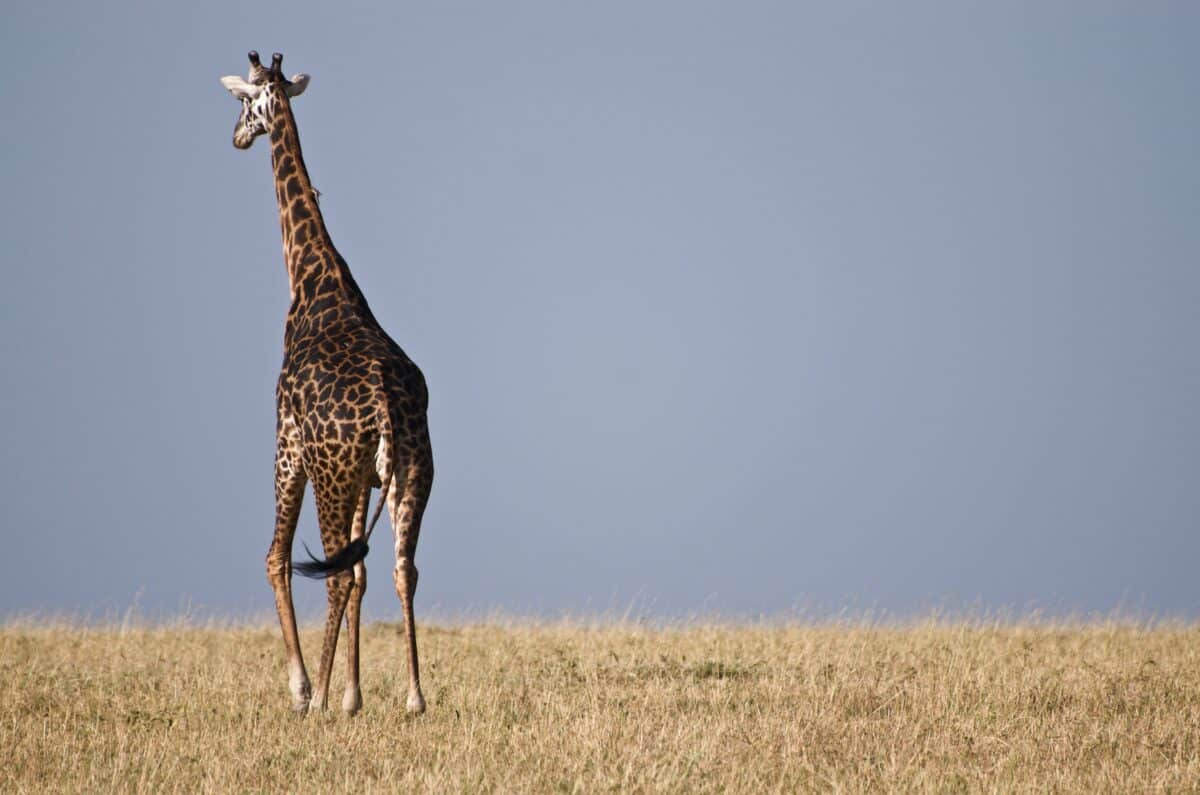
The following ranking is sorted after criteria that we believe are the most relevant for those seeking to see giraffes. We have compiled a list for seeing giraffes in the wild.
So, our ranking is based on these criteria:
- How Likely is it to see the Giraffes
- The ranking of the ethical nature of the safari
- The overall setting
#1 Etosha National Park
Etosha National Park is a national park located in Northwestern Namibia. It is the most famous of all the national parks in Namibia, as visited by tens of thousands of visitors every year. The total area of the reserve extends over 22.000 km2.
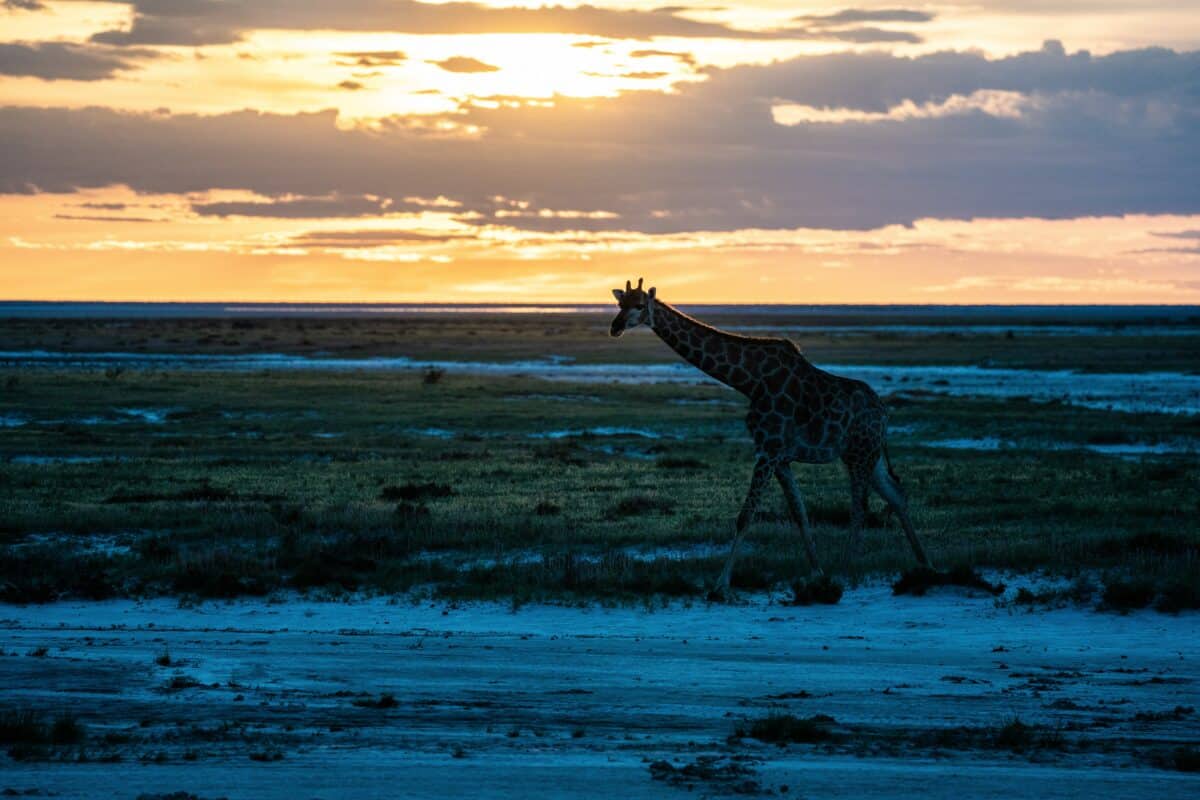
Home to the Angolan giraffe, the Etosha National Park should be at the top of anyone’s list who is interested in seeing giraffes. Not only is the location beautiful, but also, the population of giraffes within this region of Africa has nearly doubled over the last couple of decades due to conservation efforts undertaken in Namibia.
Be sure to be patient watching the giraffes drinking out of the waterhole, where they will congregate within their herds during the day.
Key Statistics to seeing Giraffes in Etosha National Park
| Best Time | May-December |
| Average High Outside Temperature | 28-34 C / 82-91 F |
| Chance to see Giraffes | Higher than 90% |
| Setting | Along the Etosha pan |
Best tours in Etosha National Park to see the Giraffes
Multiple tours offering wildlife experiences, including seeing giraffes. Here are the most reliable ones (Rated on Google Maps and Trip Advisor)
- Namibia Individual Travel
- African Overland Tours
- Nature Travel Namibia
- Wayfairer Travel
- Discover Africa
#2 Giraffes in South Africa: Kruger National Park
The Kruger National Park is the largest nature and game reserve in South Africa. The Kruger Park is located in the north-east, about a four-hour drive from Johannesburg. The national park is located in the provinces of Limpopo and Mpumalanga and on the outskirts of Zimbabwe, Mozambique, and the Kingdom of Swaziland.
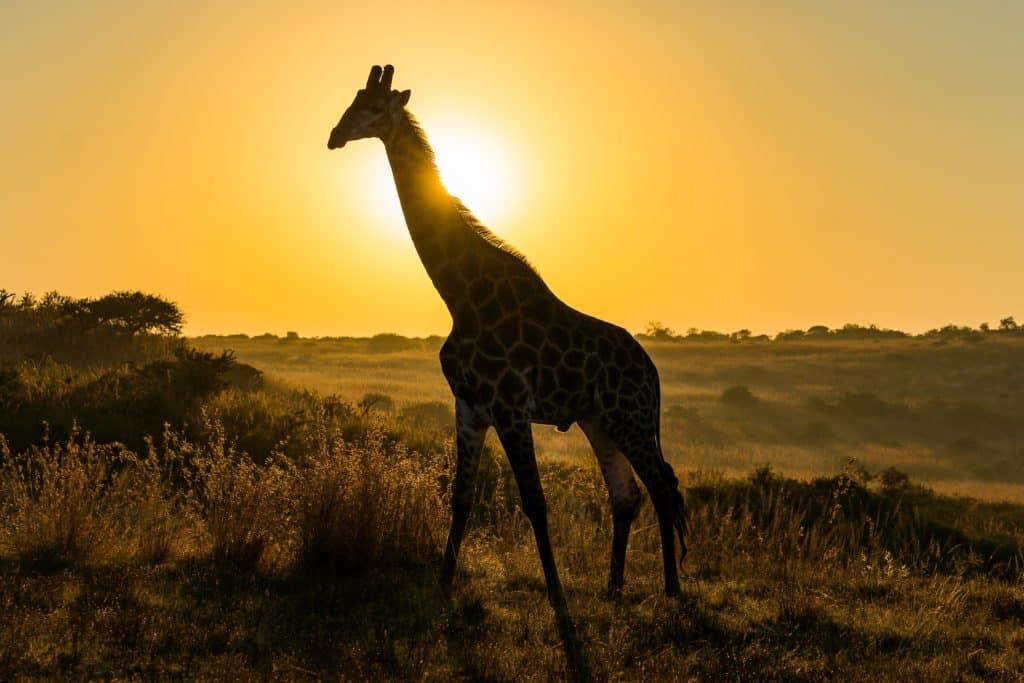
Thanks to the conservation efforts carried out within the region, the number of giraffes has increased as well within this national park. Therefore, giraffes are widespread in the Kruger National Park with sightings often around the Sabie River and the Sweni River Road where there are two functioning waterholes.
Take a self-driving tour of the park and be sure to look out for any giraffes gracefully roaming or taking a drink at one of the waterholes!
Read our dedicated article on the Kruger National Park to learn more!
Key Statistics to seeing Giraffes in Kruger National Park
| Best Time | April – September |
| Average High Outside Temperature | 23-31 C / 73-87 F |
| Chance to see Giraffes | Higher than 90% |
| Setting | scenic and diverse |
Best tours in Kruger National Park to see the Giraffes
Multiple tours offer wildlife experiences, including seeing giraffes. Here are the most reliable ones (Rated on Google Maps and Trip Advisor)
#3 Murchison Falls National Park, Uganda
Situated in North-western Uganda, this beautiful national park is surrounded by Lake Albert and the Victoria Nile. Murchison Falls National Park is Uganda’s largest national park and stretches around 3,893 sq km meaning that there is plenty of room for animals such as giraffes to roam.
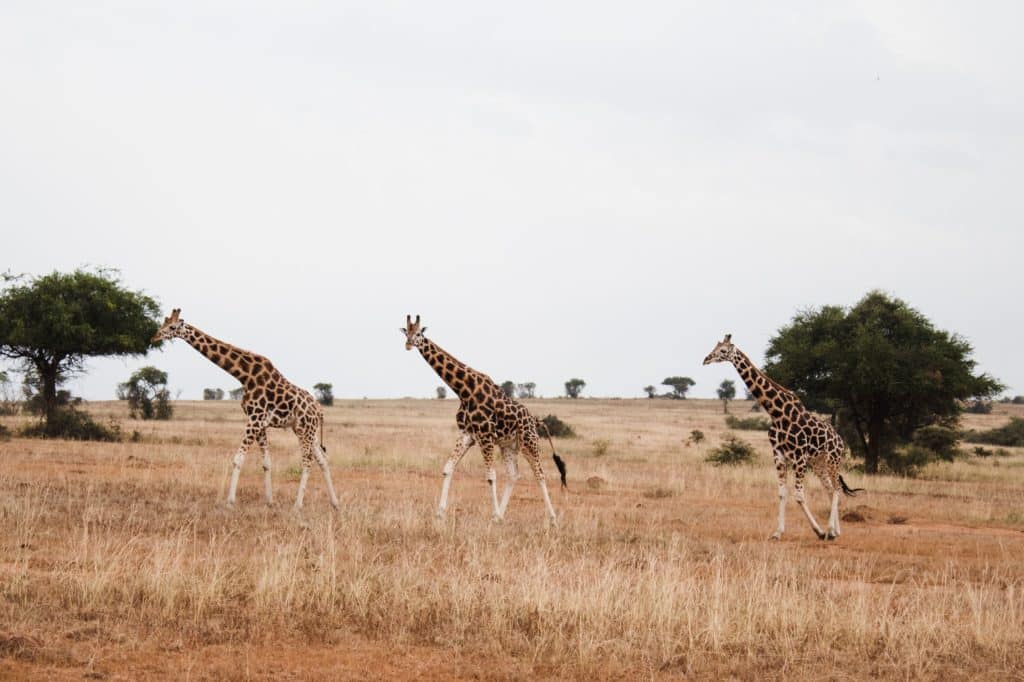
When you go and visit this area of natural beauty, you will find the Nubian giraffes which are one of the more endangered subspecies of giraffes living in protected areas of Kenya and Uganda.
The Nubian giraffes are distinguishable by the coloring of their pelt. Also, what makes them unique is the fact that they are born with five ossicones on their head. You will likely find them gracefully meandering around the savannah area of the national park.
Also, what makes this national park a particularly special visit is the conservation efforts that have been undertaken to help giraffes in the region. Specifically, in 2010, it was said that around 250 Nubian giraffes were living in the national park. Since 2013, there has been an increase in giraffe conservation in Uganda, meaning that the country is now home to more than 1,600 Nubian giraffes.
Key Statistics to seeing Giraffes in Murchison Falls National Park
Best Time
December – February
Average High Outside Temperature
18-33 C / 73-87 F
Chance to see Giraffes
Higher than 85%
Setting
along the Victoria Nile
Best tours in Murchison Falls National Park to see the Giraffes
Multiple tours offer wildlife experiences, including seeing giraffes. Here are the most reliable ones (Rated on Google Maps and Trip Advisor)
#4 Maasai Mara National Reserve, Kenya
The Maasai Mara is a large game reserve situated in Kenya. Named after the Maasai people who live in the area, this reserve covers some 1,510 km square in the south of Kenya. An area of rich ecology, you can find major rivers including the Mara River as well as shrubs and dotted trees covering the hills.
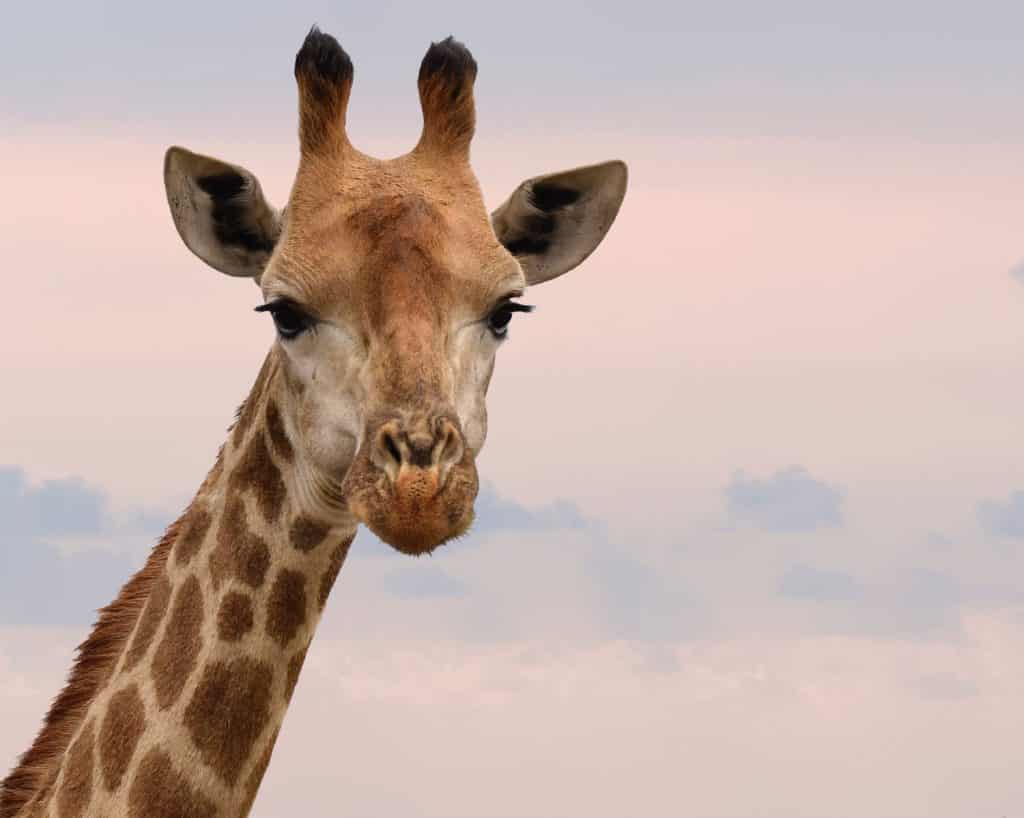
The reason why this region is a spectacular spot to see giraffes is because of the herds of Masai giraffes roaming around the grasslands. Whilst the Masai giraffe population has decreased by 50% in recent decades due to habitat loss as well as killing, there are around 32,550 in the wild. Thanks to conservation work conducted by the Kenya Wildlife Service, it is more than likely that you will come across this majestic creature on your travels to the Maasai Mara.
Key Statistics to seeing Giraffes in Maasai Mara National Reserve
| Best Time | July-October |
| Average High Outside Temperature | 20-25 C / 68-77 F |
| Chance to see Giraffes | Higher than 80% |
| Setting | Scenic grasslands |
Best tours in Maasai Mara National Reserve to see the Giraffes
Multiple tours are offering wildlife experiences, including giraffes. Here are the most reliable ones (Rated on Google Maps and Trip Advisor)
#5 Serengeti National Park, Tanzania
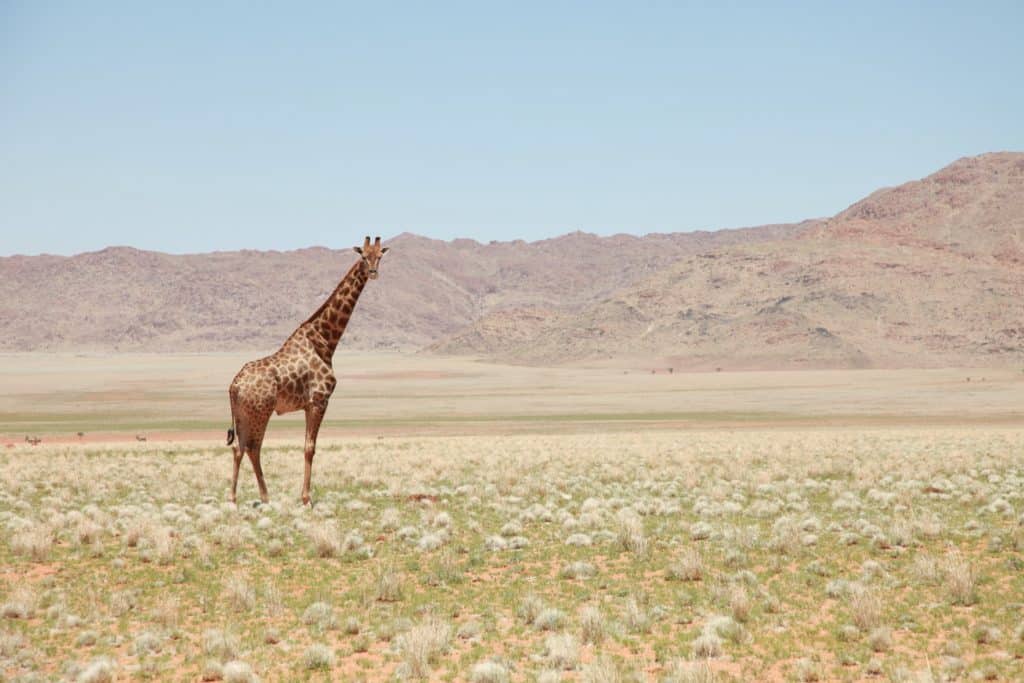
This national park covers 14,750 sq km and has a rich variety of terrains to see the giraffes including grasslands, savanna, forest, and woodlands. The Serengeti is situated in the north of Tanzania, running down from the Maasai Mara National Reserve in Kenya.
Many herds of Maasai giraffes can be seen roaming around the Serengeti, sometimes in groups of up to 40 individuals. Given the size of the reserve, it is said that the best place to find the giraffe is in Northern Serengeti. This is because this area of the park is mainly grasslands where the giraffes thrive.
Key Statistics to seeing Giraffes in the Serengeti National Park
| Best Time | June – September |
| Average High Outside Temperature | 13-25C / 55-77 F |
| Chance to see Giraffes | Higher than 90% |
| Setting | Diverse ecosystem |
Best tours in Serengeti National Park to see the Giraffes
Multiple tours are offering wildlife experiences, including to see giraffes. Here are the most reliable ones (Rated on Google Maps and Trip Advisor)
- Soul of Tanzania
- Shemeji Safari Tanzania
- Enchanting Tanzania Safaris
- Kichaos Tanzania Safaris
- Kusini Safaris
#6 Giraffe Manor, Kenya
Whilst it is not a safari destination, the Giraffe Manor in Kenya has become a very popular destination for those who would like an up close and personal experience with giraffes. Not only are you guaranteed to see giraffes whilst you eat, but also, you are also able to feed the giraffes.
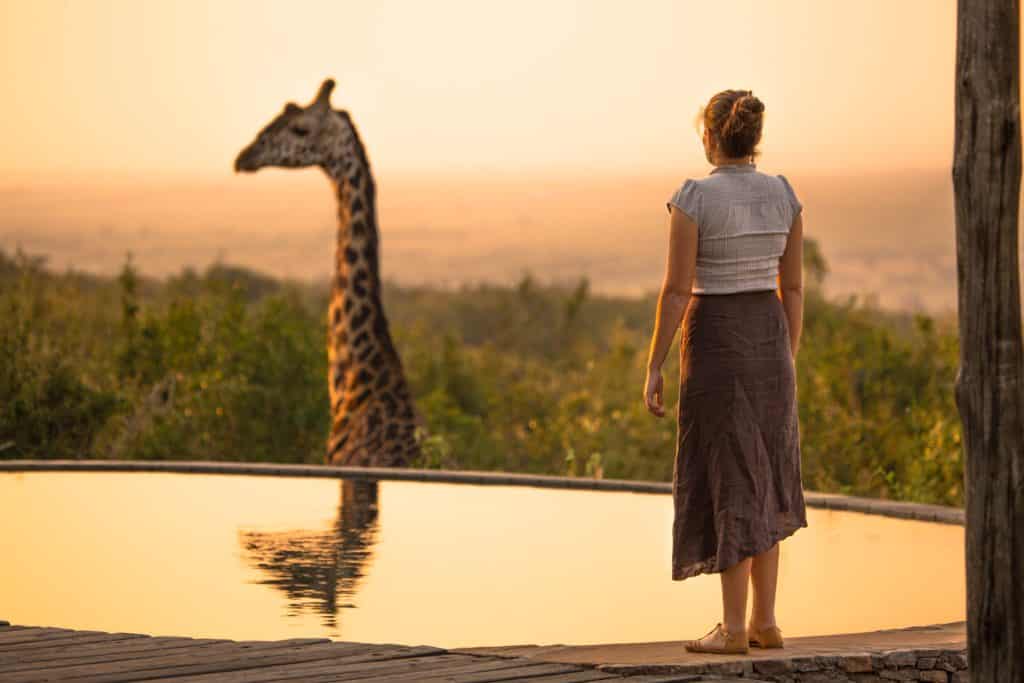
Set in a neighborhood in Nairobi, the Giraffe Manor encompasses around 56 hectares of land where the Rothschild giraffe is found. This subspecies is one of the more threatened subspecies of giraffes which makes the encounter more special as conservation efforts are underway.
Don’t be shy as you eat your breakfast. These beautiful creatures will more likely than not put their neck out above your table to see what you are up to. Such a unique encounter allows you to have a personalized experience at any time of the year.
Watch the video below to get a sneak preview of what you can do at the Giraffe Manor:

Seeing Giraffes: Fun Facts
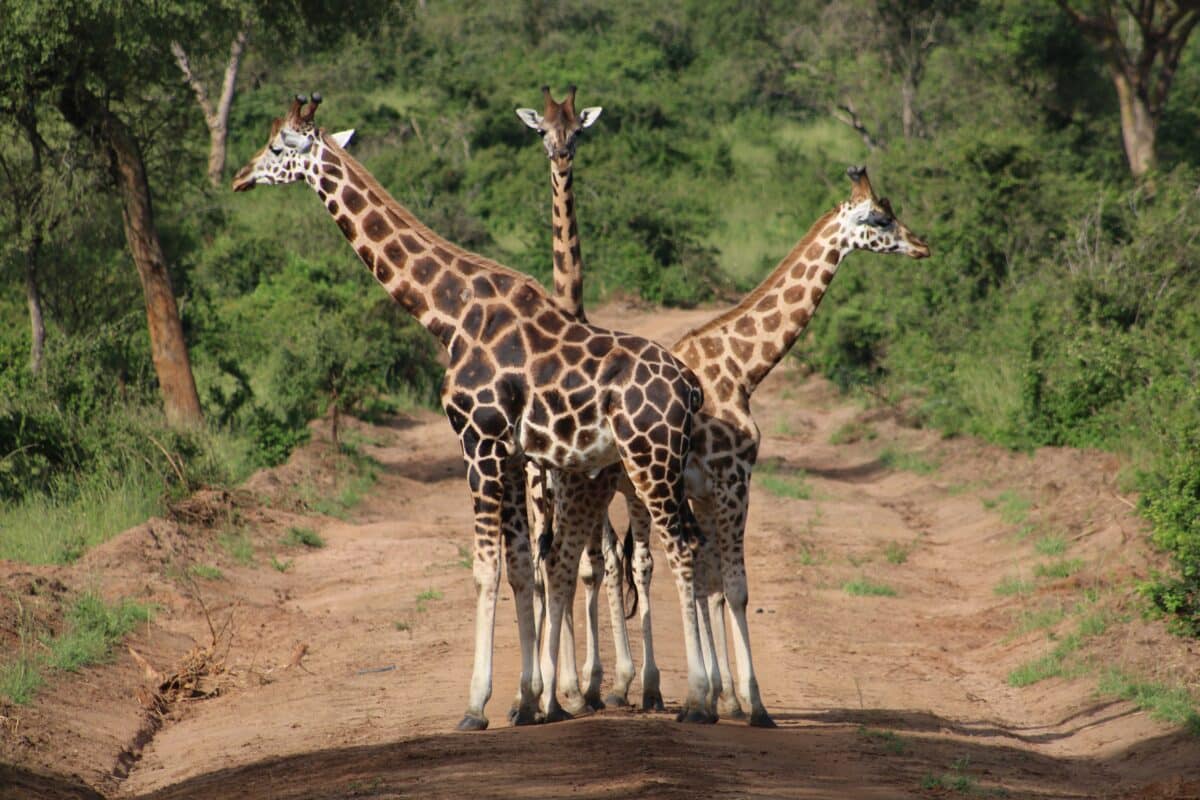
Here are some funky facts that you can notice when you see giraffes.
How long do Giraffes live for?
Generally speaking, giraffes can live for 20 – 25 years in the wild.
How do giraffes drink?
Giraffes have a difficult time trying to drink! Whilst they are able to get most of their fluids from plants and other sources of nutrition, every few days, giraffes must drink from a water source.
You may notice that for the giraffe to get down to the water, they must slide their front two legs in an awkward position to get far down enough! This is because, surprisingly, their neck is not long enough to reach the ground.
How long is a giraffe’s tongue?
Giraffe tongues can reach up to around 50-53cm. This particularly long tongue means that giraffes can find nutrition on trees such as acacias which are known to be particularly difficult for other animals due to their spikes.
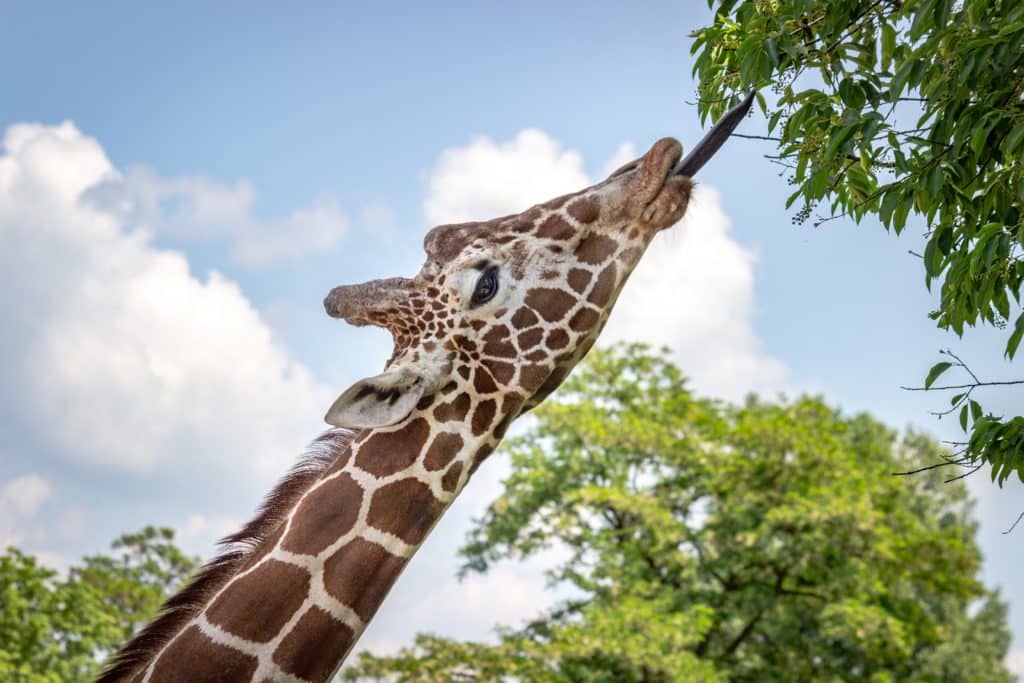
Giraffes diet
Giraffes can eat up to 34 kg of food per day.
Giraffes receive a lot of water through their food sources. But, they can drink up to 38 litres a day.
Summary of where to see Giraffes
To conclude, going to see giraffes in the wild is a beautiful and unique experience. To be up close and personal with these creatures will allow you to truly appreciate them. Go and see for yourself!
There are also many national parks to discover wildlife, so here are the Top 10 Safari Parks in Africa.
Furthermore, the other big mammal friends of giraffes are elephants. We found the Best Places to Observe Wild Elephants for you!
Also, learn about the awesome Manatee.
Join our Forum for free today!

- Third Elk Incident in Two Weeks in Estes Park, Colorado and How to Stay Safe - July 4, 2024
- 17 Animals That Mate For Life - June 24, 2024
- 13 Animals That Lay Eggs (Some Might Surprise You!) - June 16, 2024

